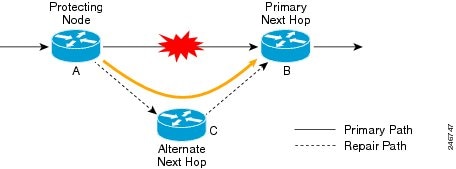Prerequisites for OSPFv2 Loop-Free Alternate IP Fast Reroute
Open Shortest Path First (OSPF) supports IP Fast Reroute (FRR) only on platforms that support this feature in the forwarding plane. See the Cisco Feature Navigator at http://www.cisco.com/go/cfn for information on platform support. An account on Cisco.com is not required.


 Feedback
Feedback